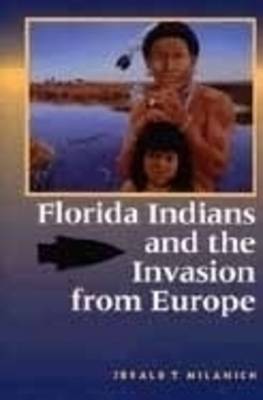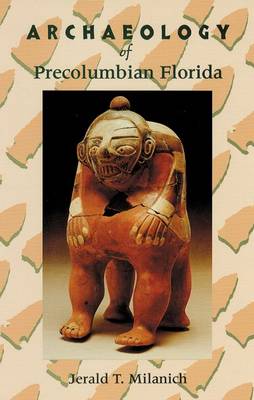Florida and the Caribbean Open Books
2 total works
When the conquistadors arrived in Florida in the early sixteenth century, as many as 350,000 native Americans lived in the territory. For more than twelve centuries their ancestors had resided there, fishing, hunting, gathering wild plants, and sometimes cultivating crops. Two and a half centuries later, Florida's Indians were gone. Focusing on those native peoples and their interactions with Spanish and French explorers and colonists, Jerald Milanich describes this massive cultural change. Using information gathered from archaeological excavations and from the interpretation of historical documents left behind by the colonial powers, he explains where the native groups came from, where they lived, and what happened to them. He closes with the tragic disappearance of the original inhabitants in the eighteenth century and the first appearance of the ancestors of Florida's present Native Americans.
This record of pre-Columbian Florida relates the 12,000-year story of the native peoples who inhabited the state. Using information gathered by archaeological investigations, many carried out since 1980, Jerald Milanich describes the indigenous cultures and explains why they developed as they did. Milanich introduces the material heritage of the first This record of pre-Columbian Florida relates the 12,000-year story of the native peoples who inhabited the state. Using information gathered by archaeological investigations, many carried out since 1980, Jerald Milanich describes the indigenous cultures and explains why they developed as they did. Milanich introduces the material heritage of the first Floridi ans through the interpretation of artifacts and archaeological sites. Weaving together discoveries from such sites as the Lake Jackson mounds near Tallahassee, Crystal River on the Gulf Coast and Granada on the Miami River, he relates the long histories of the native groups whose descendents were decimated during the European conquest of the 16th and 17th centuries. Milanich begins with an overview of the history of archaeology in Florida.
He then describes the earliest aboriginal cultures: the Paleoindians and the people of the Archaic period. The later, regional cultures (Weeden Island, Fort Walton, Glades, Caloosahatchee and many others are correlated with geographical and environmental regions and then compared to provide insights about the nature of chiefdom societies, the effects of wetlands on pre-Columbian settlement systems and the environmental history of the state. Maps and illustrations document this history of archaeological research in Florida and of the sites and artifacts (including Weeden Island pottery vessels and Belle Glade wooden carvings) left behind by the pre-Columbian people.
He then describes the earliest aboriginal cultures: the Paleoindians and the people of the Archaic period. The later, regional cultures (Weeden Island, Fort Walton, Glades, Caloosahatchee and many others are correlated with geographical and environmental regions and then compared to provide insights about the nature of chiefdom societies, the effects of wetlands on pre-Columbian settlement systems and the environmental history of the state. Maps and illustrations document this history of archaeological research in Florida and of the sites and artifacts (including Weeden Island pottery vessels and Belle Glade wooden carvings) left behind by the pre-Columbian people.

